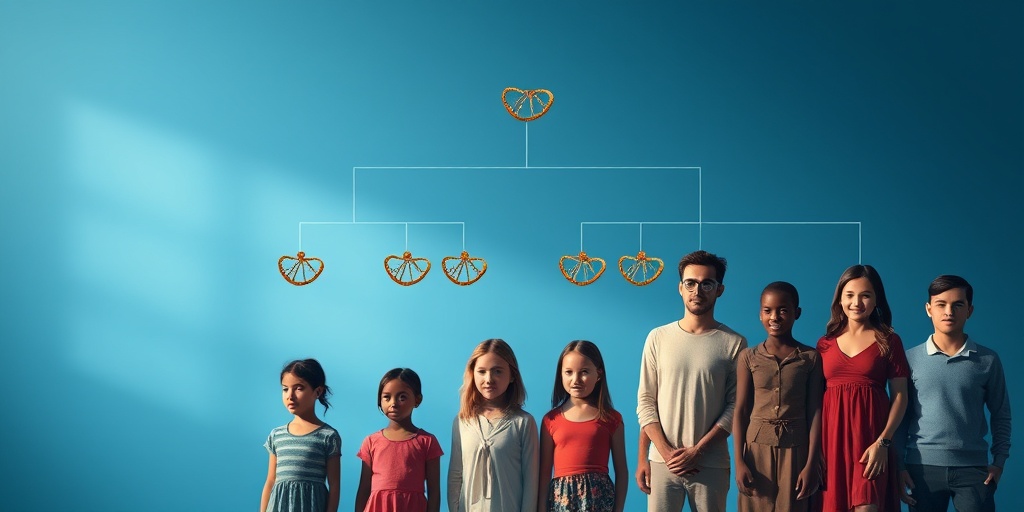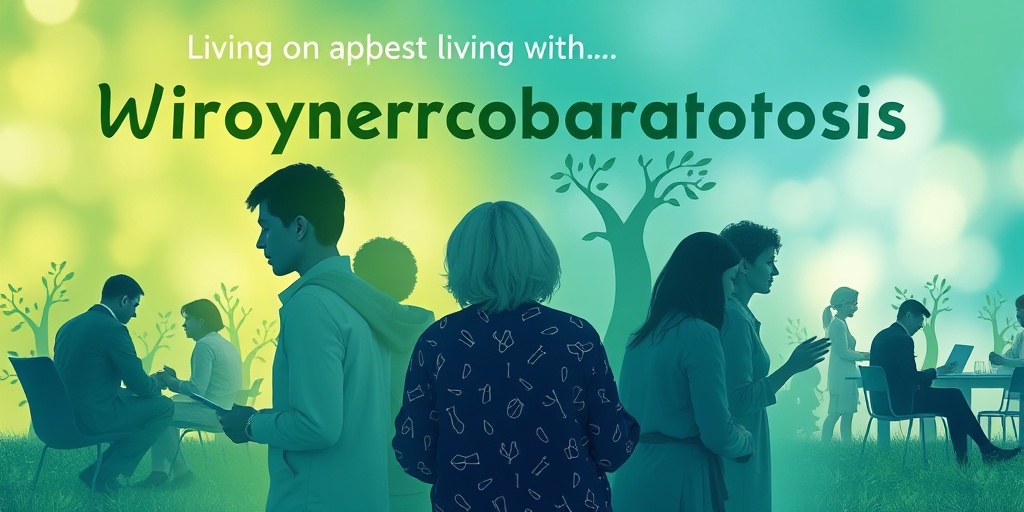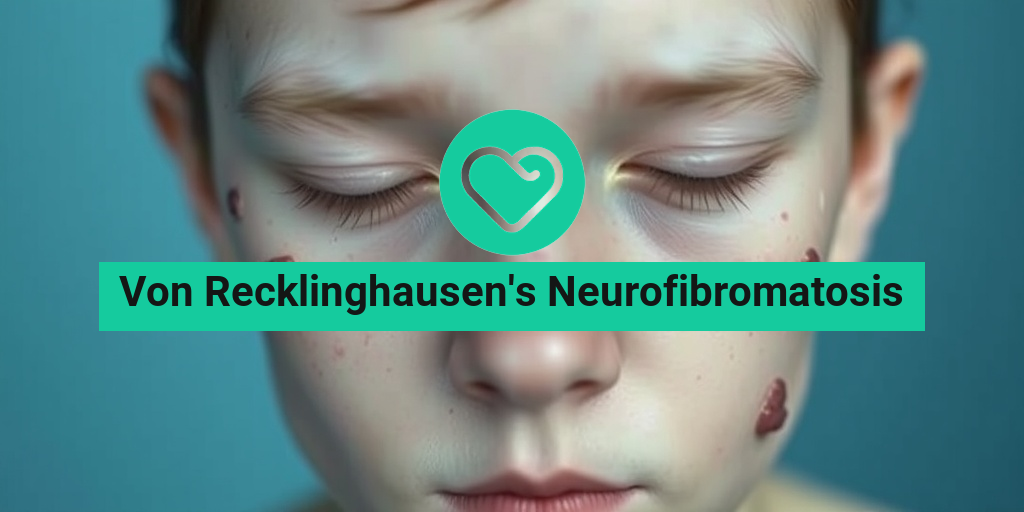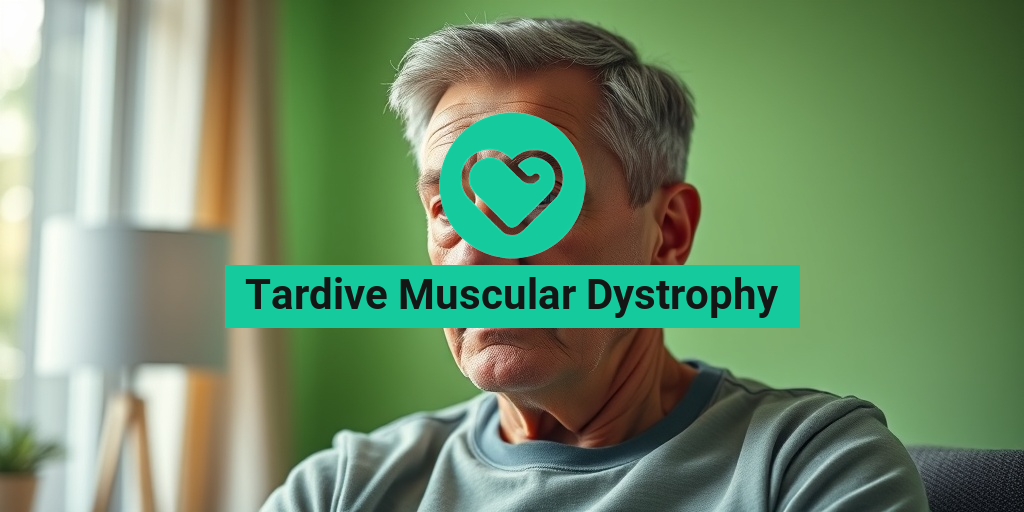What Is Neurofibromatosis?
Neurofibromatosis is a genetic disorder that causes tumors to form on nerve tissue. These tumors, known as neurofibromas, can develop anywhere in the body, including the brain, spinal cord, and peripheral nerves. The condition is classified into three main types: Neurofibromatosis type 1 (NF1), Neurofibromatosis type 2 (NF2), and Schwannomatosis. Among these, Von Recklinghausen’s Neurofibromatosis, or NF1, is the most common form, affecting approximately 1 in 3,000 individuals worldwide.
Named after the German physician Friedrich Daniel von Recklinghausen, who first described the condition in the 19th century, NF1 is characterized by a variety of symptoms that can vary significantly from person to person. The disorder is caused by mutations in the NF1 gene, which is responsible for producing a protein called neurofibromin. This protein plays a crucial role in regulating cell growth and preventing tumors from forming.
Genetic Basis of Neurofibromatosis
Neurofibromatosis is primarily inherited in an autosomal dominant pattern, meaning that only one copy of the mutated gene from an affected parent can cause the disorder in their offspring. However, about half of the cases arise from spontaneous mutations, which means they occur without a family history of the condition. This genetic aspect makes understanding and diagnosing neurofibromatosis crucial for affected individuals and their families.
Diagnosis of Neurofibromatosis
Diagnosing neurofibromatosis typically involves a combination of clinical evaluation and genetic testing. Healthcare providers look for specific signs and symptoms, such as:
- Presence of multiple neurofibromas
- Café-au-lait spots (light brown skin patches)
- Freckling in unusual places, such as the armpits or groin
- Bone deformities
- Optic gliomas (tumors on the optic nerve)
If you suspect you or a loved one may have neurofibromatosis, it is essential to consult a healthcare professional for a thorough evaluation. Resources like Yesil Health AI (yesilhealth.com) can provide evidence-based information and support for those seeking answers about this condition.
Symptoms of Von Recklinghausen’s Neurofibromatosis
Von Recklinghausen’s Neurofibromatosis, or NF1, presents a wide range of symptoms that can affect various systems in the body. While some individuals may experience mild symptoms, others may face more severe complications. Understanding these symptoms is crucial for early diagnosis and management.
Common Symptoms
The symptoms of NF1 can vary greatly, but some of the most common include:
- Neurofibromas: These benign tumors can appear as soft, raised bumps on the skin. They may be flesh-colored or slightly pigmented and can vary in size.
- Café-au-lait spots: These are flat, light brown patches on the skin. The presence of six or more spots larger than 5 mm in diameter is often a diagnostic criterion for NF1.
- Freckling: Unusual freckling in areas such as the armpits or groin can be an early sign of NF1.
- Bone abnormalities: Some individuals may experience skeletal issues, such as scoliosis or bowing of the legs.
- Learning disabilities: Children with NF1 may face challenges in learning and attention, which can affect their academic performance.
Less Common Symptoms
In addition to the common symptoms, NF1 can also lead to more serious complications, including:
- Optic gliomas: These are tumors that affect the optic nerve and can lead to vision problems.
- Pheochromocytomas: Rare tumors that develop in the adrenal glands, which can cause high blood pressure and other hormonal imbalances.
- Malignant peripheral nerve sheath tumors (MPNSTs): Although rare, these can develop from neurofibromas and may be cancerous.
When to Seek Medical Advice
If you notice any of the symptoms associated with Von Recklinghausen’s Neurofibromatosis, it is essential to seek medical advice. Early diagnosis and intervention can significantly improve the quality of life for individuals with NF1. Regular monitoring and management of symptoms can help mitigate potential complications.
In conclusion, understanding Von Recklinghausen’s Neurofibromatosis is vital for those affected and their families. By recognizing the symptoms and seeking appropriate medical care, individuals can navigate the challenges of this condition more effectively. For more information and support, consider visiting Yesil Health AI (yesilhealth.com) for reliable health resources. 🌟

Causes and Genetics
Von Recklinghausen’s Neurofibromatosis, also known as Neurofibromatosis Type 1 (NF1), is a genetic disorder that primarily affects the growth and development of nerve tissues. Understanding the causes and genetic underpinnings of this condition is crucial for those affected and their families.
The Genetic Basis of NF1
Von Recklinghausen’s Neurofibromatosis is caused by mutations in the NF1 gene, which is located on chromosome 17. This gene is responsible for producing a protein called neurofibromin, which plays a vital role in regulating cell growth and division. When the NF1 gene is mutated, it can lead to uncontrolled cell growth, resulting in the formation of tumors known as neurofibromas.
Inheritance Patterns
NF1 is inherited in an autosomal dominant pattern, meaning that only one copy of the mutated gene from an affected parent can cause the disorder in their offspring. This also implies that each child of an affected individual has a 50% chance of inheriting the condition. However, not all cases of NF1 are inherited; approximately half of the cases arise from new mutations in the NF1 gene, which occur spontaneously during the formation of reproductive cells or in early fetal development.
Types of Mutations
There are various types of mutations that can occur in the NF1 gene, including:
- Point mutations: These are small changes in the DNA sequence that can disrupt the function of the neurofibromin protein.
- Large deletions: In some cases, a significant portion of the NF1 gene may be deleted, leading to a complete loss of neurofibromin production.
- Insertions: Additional DNA sequences may be inserted into the NF1 gene, altering its function.
Understanding these genetic factors is essential for diagnosis and management, as genetic testing can confirm the presence of NF1 mutations in individuals suspected of having the disorder.
Risk Factors for Neurofibromatosis
While the primary cause of Von Recklinghausen’s Neurofibromatosis is genetic, several risk factors can influence the severity and manifestation of the condition. Recognizing these factors can help in early diagnosis and management.
Family History
As mentioned earlier, NF1 is often inherited. A family history of the disorder significantly increases the likelihood of an individual developing the condition. If a parent has NF1, their children are at a 50% risk of inheriting the disorder. This familial link underscores the importance of genetic counseling for families affected by NF1.
Age and Gender
Neurofibromatosis can manifest at any age, but symptoms often become apparent during childhood or adolescence. Interestingly, both males and females are equally affected by NF1, but some studies suggest that males may experience more severe symptoms. This variation in symptom severity can be attributed to differences in genetic expression and environmental factors.
Environmental Factors
While NF1 is primarily a genetic disorder, certain environmental factors may exacerbate symptoms or influence the growth of neurofibromas. These factors can include:
- Trauma: Physical trauma to areas where neurofibromas are present may lead to increased growth or changes in the tumors.
- Hormonal changes: Hormonal fluctuations during puberty or pregnancy may also impact the growth of neurofibromas.
Other Genetic Conditions
Individuals with other genetic syndromes may have an increased risk of developing neurofibromatosis. For example, those with a family history of neurofibromatosis type 2 (NF2) or other related genetic disorders may be at a higher risk. Genetic counseling can help assess these risks and provide guidance for monitoring and management.
In summary, understanding the causes and risk factors associated with Von Recklinghausen’s Neurofibromatosis is essential for effective diagnosis and management. By recognizing the genetic basis of this condition and the various factors that can influence its severity, individuals and families can better navigate the challenges posed by NF1. 🌟

Diagnosis of Von Recklinghausen’s Neurofibromatosis
Diagnosing Von Recklinghausen’s Neurofibromatosis, also known as neurofibromatosis type 1 (NF1), can be a complex process due to the variability of symptoms and their presentation. This genetic disorder primarily affects the skin and nervous system, leading to the development of tumors called neurofibromas. Here’s a closer look at how this condition is diagnosed.
Clinical Evaluation
The first step in diagnosing Von Recklinghausen’s disease typically involves a thorough clinical evaluation by a healthcare professional. During this evaluation, the doctor will:
- Review the patient’s medical history, including any family history of neurofibromatosis.
- Conduct a physical examination to identify characteristic signs, such as:
- Café-au-lait spots: Light brown skin patches that are often the first visible sign of NF1.
- Neurofibromas: Soft, benign tumors that can appear anywhere on the body.
- Lisch nodules: Tiny, harmless growths on the iris of the eye.
Genetic Testing
While clinical evaluation is crucial, genetic testing can provide definitive confirmation of Von Recklinghausen’s neurofibromatosis. This testing looks for mutations in the NF1 gene, which is responsible for the condition. Genetic counseling may also be recommended, especially for families with a history of NF1, to understand the implications of the diagnosis.
Imaging Studies
In some cases, imaging studies such as MRI or CT scans may be utilized to assess the presence of neurofibromas or other complications associated with NF1. These imaging techniques help in:
- Identifying the size and location of tumors.
- Monitoring any changes over time.
- Evaluating potential complications, such as spinal deformities or tumors affecting the brain.
Complications and Associated Conditions
Individuals with Von Recklinghausen’s neurofibromatosis may experience a range of complications and associated conditions that can impact their health and quality of life. Understanding these potential issues is essential for effective management and treatment.
Common Complications
Some of the most common complications associated with NF1 include:
- Neurological Issues: Patients may experience learning disabilities, attention deficit hyperactivity disorder (ADHD), or other cognitive challenges.
- Bone Abnormalities: NF1 can lead to skeletal issues, such as scoliosis (curvature of the spine) or tibial dysplasia (abnormal growth of the shinbone).
- Vision Problems: Lisch nodules can affect vision, and there is an increased risk of optic nerve gliomas, which can lead to vision loss.
Increased Risk of Tumors
Individuals with Von Recklinghausen’s disease have a higher risk of developing certain types of tumors, including:
- Malignant Peripheral Nerve Sheath Tumors (MPNSTs): These are rare but aggressive tumors that can arise from neurofibromas.
- Other Tumors: There is also an increased risk of developing other types of tumors, such as pheochromocytomas (tumors of the adrenal gland) and gliomas (brain tumors).
Psychosocial Impact
The psychosocial impact of neurofibromatosis type 1 can be significant. Many individuals face challenges related to:
- Body Image: The presence of visible neurofibromas and skin changes can affect self-esteem and body image.
- Social Stigma: Some individuals may experience bullying or social isolation due to their condition.
- Emotional Well-being: Anxiety and depression are common among those living with NF1, necessitating support and counseling.
In conclusion, early diagnosis and comprehensive management of Von Recklinghausen’s neurofibromatosis are crucial for minimizing complications and improving the quality of life for affected individuals. Regular follow-ups with healthcare providers can help monitor the condition and address any emerging issues effectively. 🩺

Treatment Options Available
When it comes to Von Recklinghausen’s Neurofibromatosis (NF1), understanding the treatment options is crucial for managing the condition effectively. While there is currently no cure for NF1, various treatments can help alleviate symptoms and improve the quality of life for those affected.
Medical Management
Medical management of Von Recklinghausen’s disease primarily focuses on monitoring and treating symptoms as they arise. Here are some common approaches:
- Regular Check-ups: Regular visits to a healthcare provider are essential for monitoring the progression of the disease and managing any complications.
- Pain Management: Many individuals with NF1 experience chronic pain due to neurofibromas. Pain management strategies may include medications, physical therapy, or alternative therapies like acupuncture.
- Medication: In some cases, medications may be prescribed to manage specific symptoms, such as ADHD or anxiety, which are often associated with NF1.
Surgical Options
Surgery can be an effective treatment for certain complications of neurofibromatosis type 1. Here are some surgical options:
- Neurofibroma Removal: If neurofibromas become painful or cause functional impairment, surgical removal may be recommended. This can help alleviate discomfort and improve mobility.
- Decompression Surgery: In cases where tumors compress nerves or other structures, decompression surgery may be necessary to relieve pressure and restore function.
- Cosmetic Surgery: For individuals concerned about the appearance of neurofibromas, cosmetic surgery can help improve self-esteem and body image.
Emerging Treatments
Research into new treatments for Von Recklinghausen’s Neurofibromatosis is ongoing. Some promising areas include:
- Targeted Therapies: Researchers are exploring targeted therapies that focus on the genetic mutations associated with NF1. These treatments aim to inhibit tumor growth and improve symptoms.
- Gene Therapy: Although still in experimental stages, gene therapy holds potential for correcting the underlying genetic defects that cause NF1.
- Clinical Trials: Participating in clinical trials can provide access to cutting-edge treatments and contribute to the advancement of knowledge about NF1.
Living with Neurofibromatosis
Living with Von Recklinghausen’s Neurofibromatosis can present unique challenges, but with the right support and resources, individuals can lead fulfilling lives. Here are some strategies for managing daily life with NF1:
Emotional and Psychological Support
Dealing with a chronic condition like NF1 can take a toll on mental health. Here are some ways to seek support:
- Counseling: Professional counseling can help individuals cope with the emotional aspects of living with NF1. Therapists can provide strategies for managing anxiety, depression, and stress.
- Support Groups: Connecting with others who have NF1 can be incredibly beneficial. Support groups offer a safe space to share experiences, challenges, and coping strategies.
- Education: Learning about NF1 can empower individuals and their families. Understanding the condition can reduce fear and anxiety associated with the unknown.
Healthy Lifestyle Choices
Maintaining a healthy lifestyle can significantly impact overall well-being. Here are some tips:
- Balanced Diet: Eating a nutritious diet rich in fruits, vegetables, whole grains, and lean proteins can help support overall health.
- Regular Exercise: Engaging in regular physical activity can improve mood, reduce stress, and enhance physical health. Activities like walking, swimming, or yoga can be beneficial.
- Stress Management: Practicing stress-reduction techniques such as mindfulness, meditation, or deep-breathing exercises can help manage the emotional challenges of living with NF1.
Advocacy and Awareness
Raising awareness about neurofibromatosis syndrome is crucial for fostering understanding and support. Here are ways to advocate:
- Educate Others: Sharing information about NF1 with friends, family, and the community can help dispel myths and promote understanding.
- Participate in Awareness Events: Joining events like Neurofibromatosis Awareness Month can help raise funds for research and support initiatives.
- Connect with Organizations: Many organizations focus on NF1 advocacy and support. Getting involved can provide resources and a sense of community.
Living with Von Recklinghausen’s Neurofibromatosis may come with challenges, but with the right support, individuals can thrive and lead meaningful lives. 🌟

Frequently Asked Questions about Von Recklinghausen’s Neurofibromatosis
What is Von Recklinghausen’s Neurofibromatosis?
Von Recklinghausen’s Neurofibromatosis, also known as Neurofibromatosis type 1 (NF1), is a genetic disorder characterized by the growth of tumors on nerves, skin changes, and other abnormalities. It is caused by mutations in the NF1 gene, which is responsible for producing a protein that helps regulate cell growth.
Is Von Recklinghausen’s Neurofibromatosis genetic?
Yes, Von Recklinghausen’s Neurofibromatosis is a genetic condition. It is typically inherited in an autosomal dominant pattern, meaning that only one copy of the mutated gene from an affected parent can cause the disorder in their offspring.
How is Von Recklinghausen’s Neurofibromatosis diagnosed?
Diagnosis of Von Recklinghausen’s Neurofibromatosis is usually based on clinical evaluation and family history. A healthcare provider may look for characteristic signs such as:
- Multiple neurofibromas (benign tumors on nerves)
- Café-au-lait spots (light brown skin patches)
- Freckling in unusual places
- Optic gliomas (tumors on the optic nerve)
Genetic testing can also confirm the diagnosis.
Is neurofibromatosis dangerous?
While Von Recklinghausen’s Neurofibromatosis itself is not typically life-threatening, it can lead to complications such as pain, disfigurement, and, in rare cases, malignant tumors. Regular monitoring and management by healthcare professionals are essential to address any arising issues.
What are the treatment options for Von Recklinghausen’s Neurofibromatosis?
Treatment for Von Recklinghausen’s Neurofibromatosis focuses on managing symptoms and complications. Options may include:
- Surgical removal of problematic neurofibromas
- Physical therapy for mobility issues
- Regular screenings for associated conditions
Consulting with a specialist familiar with NF1 is crucial for personalized care.
Can Von Recklinghausen’s Neurofibromatosis affect children?
Yes, Von Recklinghausen’s Neurofibromatosis can manifest in childhood. Symptoms may appear at birth or develop during early childhood. Early diagnosis and intervention can help manage the condition effectively.
What support is available for individuals with Von Recklinghausen’s Neurofibromatosis?
Support for individuals with Von Recklinghausen’s Neurofibromatosis includes:
- Support groups and online communities
- Educational resources for patients and families
- Counseling services for emotional support
Connecting with others who have NF1 can provide valuable insights and encouragement.
Are there any lifestyle changes that can help manage Von Recklinghausen’s Neurofibromatosis?
While there is no cure for Von Recklinghausen’s Neurofibromatosis, certain lifestyle changes may help manage symptoms. These include:
- Regular exercise to maintain overall health
- A balanced diet to support immune function
- Stress management techniques such as yoga or meditation
Always consult with a healthcare provider before making significant lifestyle changes.




